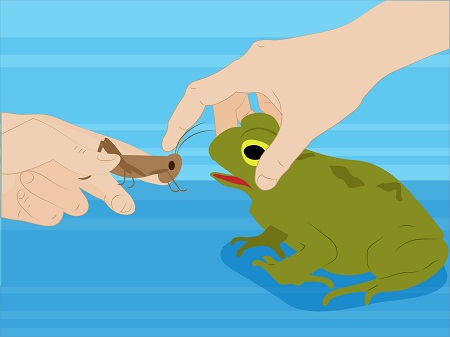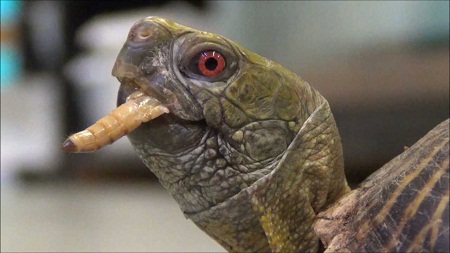Профессиональные герпетологи и опытные заводчики рептилий давно ведут спор о ценности живого корма для рептилий. Для некоторых видов это, несомненно, оптимальный рацион, тогда как для других это может быть даже опасно.
- Змеи. Здесь существует достаточно однозначный ответ. Большинству змей не стоит давать живую добычу. В природе многие виды змей питаются падалью, а тех, кто все-таки охотится самостоятельно, можно приучить съедать уже убитых животных.Одна из причин такого выбора – возможные травмы вашего питомца. Когда живого грызуна неожиданно сажают в террариум к змее, она может среагировать не сразу, и животное успеет атаковать. Другой вариант: если змея не съест грызуна сразу, он может напасть на нее ночью, когда температура понижается, и большинство змей становится менее проворными.
Даже столь прославленные хищники, как анаконды, могут подвергнуться нападению. В природе у многих змей имеются шрамы и даже сломанные ребра после столкновений с дичью. Если вы все-таки хотите кормить змею живой дичью, выбирайте новорожденных зверьков, они еще не могут кусаться.

- Жабы и лягушки. С амфибиями дело обстоит сложнее. Конечно, некоторые особи могут соблазниться, если помахать у них под носом дохлым насекомым, удерживая его пинцетом, но в большинстве своем они игнорируют неподвижные кормовые объекты. Лягушек и жаб необходимо кормить живыми сверчками, мучными червями и другими насекомыми.
Разумеется, существуют и исключения: например, африканская шпорцевая лягушка с одинаковым энтузиазмом воспринимает живой и неживой корм. Морские жабы с удовольствием едят сухой корм для собак и зелень, но это не оптимальный рацион. Саламандры, как и лягушки, предпочитают живую дичь, тогда как тритоны будут с равным наслаждением есть и засушенных насекомых.

- Черепахи. Большинство из них согласны есть специальный сухой корм для рептилий, кусочки рыбы и овощей. Некоторые едят только живых дождевых червяков. Бахромчатая черепаха (мата мата) ест исключительно живую рыбу и головастиков. Многие водные черепахи, например, красноухие, прекрасно себя чувствуют на диете из промышленного корма, к которому в качестве деликатеса иногда добавляют живую рыбу.
- Ящерицы. Многих насекомоядных ящериц, как и лягушек, стимулирует движением. Но вараны, которые питаются грызунами, примут и неживую дичь
В зоомагазинах можно приобрести замороженных мышей любых размеров. В идеале стоит покупать мышь, которую ваш питомец сможет съесть за одно кормление. Таким образом, рептилия съест животное целиком – с кожей, костями и внутренними органами, где содержатся необходимые для них питательные вещества.



